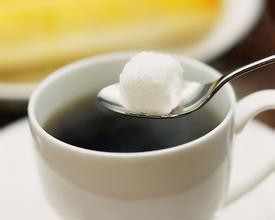There are ten criteria to consider when evaluating coffee
A variety of coffee beans from all over the world, through a variety of different processing methods to provide tasters with a variety of flavors and styles of coffee drinks. From light to full-bodied, from sour to slightly sour, so many varieties are quite confusing to those who taste coffee for the first time and those who try to distinguish them. However, just as there is a well-defined and widely understood method of wine tasting, there is a similar method of tasting coffee.

Professional coffee reviewers choose a special set of utensils, including a large number of white teacups or glasses, hundreds of sample boxes, sample plates (for roasted and fresh coffee beans, respectively), weighing scales and small grinders. Small roasting utensils, spittoons, tasting spoons and well-equipped, state-of-the-art equipment (to measure water content) may also be needed.
Although there is little difference in the appearance of coffee beans, the difference is obvious to experts. For example, some people think that selected Arabica coffee beans look better than Robbins coffee beans. Simple flavor classification can be carried out for coffee from different areas. The coffee beans from South America are very sour and refreshing, the coffee beans from East Africa, Yemen and Ethiopia are full of wine, the Arabian coffee beans from Indonesia are more full-bodied, while the Indian coffee beans are not very sour, but they can be called full-bodied.
When evaluating coffee, there are ten criteria to consider:
Type-Robbard, selected, Arabian, etc.
Taste-smooth, rough, etc.
Particles-too light, too heavy, etc.
Acidity-slightly sour, over-acidic in the upper part, etc.
Freshness-- from old to fresh
Defects-acidic, grassy, moldy, etc.
Coffee cups-roasted, washed, burned, old cups, etc.
Overall assessment-peaceful, rich, bitter, etc.
Fragrance-- from weak to strong
Fullness-not full enough to be quite full
It takes years of experience to be a good coffee connoisseur. These experiences are usually gained from practical work. Tasting coffee is similar to tasting tea and wine, although it is agreed that wine is easier to taste because it lasts longer on the taste buds.
Fakobo (Facobs Co.) A corner of the coffee product review meeting (Germany)
Coffee connoisseurs first evaluate the new coffee beans, write down their appearance and smell, then observe the samples just picked from the ground, and then the coffee beans are impregnated in water, and the tasters smell them. After about 3 minutes, stir the extract a little and smell it again to remove the foam and start tasting. The taster takes a spoonful of coffee into his mouth, chews it and then spits it out. This procedure is repeatedly applied to all samples, each of which is recorded. Many reviewers use a scale of 1-5 or even 1-10, while others have their own unique methods.
Don't be influenced by your personal tastes, you will be amazed at how quickly you have learned to distinguish between different kinds of coffee and find your favorite. You can also have a healthy and interesting blend of coffee, and you can soon create your own blend. You may find that mixing Tanzanian Tanzania Chagga AA coffee with Monsoon A coffee at 70:30 is a genius idea!
Just like tasting wine, the first step is to have the correct vocabulary, and then to accumulate experience in the process of using it, and experience can only be gained by drinking all kinds of coffee as often as possible. You will find out what is common and what you like or dislike. Everyone has different preferences for taste, so some people will think that the Harrar Longberry is too strong, or come to the conclusion that the Costa Rican coffee is bright and free of impurities.
Vocabulary of coffee reviewers
Professional reviewers use different grade ranges and records to describe the coffee drinks they taste. Here are several ways to describe them.
Flavor: animal, ash, scorched / tobacco, chemical / medicinal, chocolate, caramel / maltose, earthy, plant, fruit, cereal / green food / herbal flavor, nutty, creamy / rotten, rubber, spicy, tobacco, wine, wood
Taste: sour, bitter, salty, over-acidic, sweet
Palate: smooth, astringent, full-bodied
Robbins coffee always has a musty burnt taste, while Arabica coffee has a very acidity lemon flavor, while Arabica coffee has a very acidity lemon flavor.
Important Notice :
前街咖啡 FrontStreet Coffee has moved to new addredd:
FrontStreet Coffee Address: 315,Donghua East Road,GuangZhou
Tel:020 38364473
- Prev

What are the coffee condiments for coffee companion fancy coffee
Apart from coffee, it is hard to find a thing that can live in peace with so many lovers. If the strong bitter black coffee is the devil of charm, then cream and sugar, like the wings of angels, bring sweet warmth close to heaven. Westerners call cream and sugar coffee-mate, while coffee has more and more flavors, such as whipped cream, chocolate, cinnamon, etc.
- Next

The basic knowledge of coffee beans the purchase and preservation of coffee beans
Freshness is the life of coffee how to determine the freshness of coffee beans there are three steps: smell, see, peel. ◎ smells the coffee beans close to his nose and smells deeply to see if he can clearly smell the aroma of the coffee beans. If so, it means the coffee beans are fresh enough. On the contrary, if the aroma is weak, or if the smell is already greasy (like peanuts or nuts for a long time)
Related
- Beginners will see the "Coffee pull flower" guide!
- What is the difference between ice blog purified milk and ordinary milk coffee?
- Why is the Philippines the largest producer of crops in Liberia?
- For coffee extraction, should the fine powder be retained?
- How does extracted espresso fill pressed powder? How much strength does it take to press the powder?
- How to make jasmine cold extract coffee? Is the jasmine + latte good?
- Will this little toy really make the coffee taste better? How does Lily Drip affect coffee extraction?
- Will the action of slapping the filter cup also affect coffee extraction?
- What's the difference between powder-to-water ratio and powder-to-liquid ratio?
- What is the Ethiopian local species? What does it have to do with Heirloom native species?

